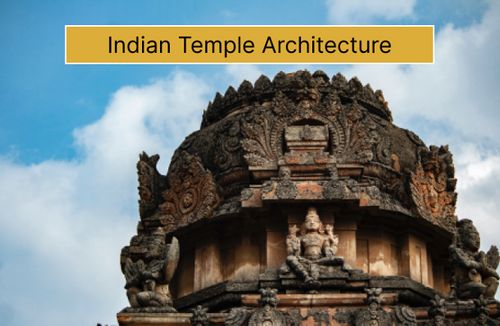Temple architecture in India: a brief introduction to the three styles
Oct 26, 2022 · 2 mins read
0
Share

Three famous styles of Indian temple architecture are Nagara, Dravidian, and Vesara.
Dravidian Style -
Hundreds of temples in South India are made in the Dravidian style. Most of these were built during the reign of the Chola rulers. Eg: Brihadisvara Temple, Thanjavur.


Save
Share
Features:
The temples are surrounded by high boundary walls. The premises are laid out in the panchayatana style with a principal temple and four subsidiary shrines. There are water tanks present in the temple premises.

Gopuram - The front wall has a high entrance gate

Save
Share
Vimana - The spire of the temple is in the form of a stepped pyramid that rises laterally rather than a curve (in Vesara). The main temple has a Vimana and subsidiary shrines do not have it. The crown on the Vimana is an octagon.

Save
Share
Nagara Style
A distinct style of temple architecture developed in Northern India from the 5th century A.D onwards. They also follow the panchayatan style. Eg: Khajuraho Group of temples.


Save
Share
Features:
Mantapas - They are the assembly halls in front of the principal shrine. Unlike in South India they don't usually have elaborate boundary walls/gateways.
Shikhara is the tower that forms the temple; it can be rectangular or square base, and its height/width may vary.
Save
Share
Amalak - The vertical end of the shikara ends in a horizontal fluted disc.
On top of it, a spherical shape is placed called a kalash.

Save
Share
Vesara Style
This combines features of the Nagara and Dravidian style. It was conceptualized under the later Chalukyan rulers in the mid-seventh century. Eg: Ladkhan, Doddabasappa, and Badami temples.
Save
Share
Features:
More emphasis is on vimana, mandapa, and open ambulatory passage. Intricate carvings can be seen on pillars, doorways, and ceilings.

Save
Share
Influence of Nagara style on Vesara: Curvilinear Shikhara and square base.
Influence of Dravidian style on Vesara: Design of Vimana, step/terraced Shikara, intricate carvings and sculptures.
Save
Share
Final Note: These styles have more subsets and variations. Every ruling dynasty in India added their own elements to it. I hope you’ve learned that Indian temples don’t just have mesmerizing beauty - they are built on strong scientific elements.
Save
Share
0